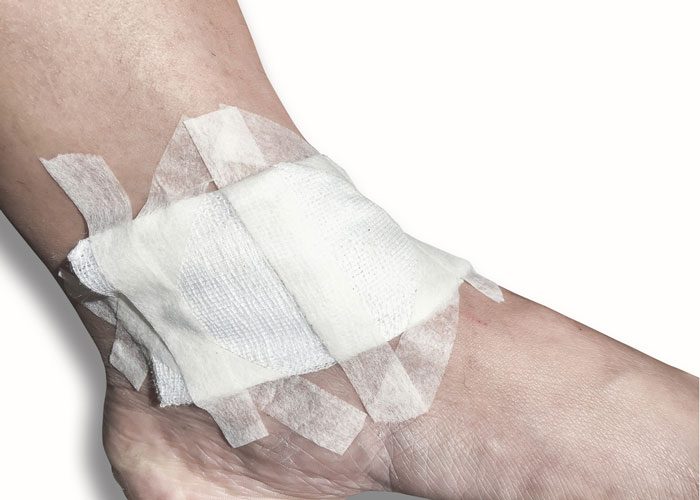ANGPTL4 patch may improve hard-to-heal skin lesions for diabetic patients
Posted: 25 September 2017 | Dr Zara Kassam (European Pharmaceutical Review) | No comments yet
Scientists have developed a new gel patch prototype that could speed up the healing of a skin wound while minimising the formation of scars…


Scientists have developed a new Angiopoietin-like 4 (ANGPTL4) gel patch prototype that could speed up the healing of a skin wound while minimising the formation of scars.
When fully developed, the healing patch could be a benefit for diabetic patients, who suffer from hard-to-heal skin lesions and for patients undergoing surgery.
The research team from Nanyang Technological University, Singapore (NTU) found that ANGPTL4 reduces inflammation in the early phase of wound healing in mice models. Later, it helps in the formation of new blood vessels and cell growth, and at the final phase, reduces scarring.
The team developed their patch enriched with ANGPTL4 to control the amount of scarring. NTU already has a patent on the ANGPTL4 in wound healing, which can be licensed to pharmaceutical companies.
Associate Professor Andrew Tan, the corresponding author of the paper, said scarring happens when excessive collagen produced by the body is assembled in one direction.
“To reduce scars, all we had to do was to find a ‘tuning knob’ that controls the amount of collagen produced, instead of turning it off completely which is what typical anti-scarring medicine does, and which could interfere with the healing process,” explained Prof Tan.
In their experiments involving mice with diabetic wounds, a wound was shown to heal stronger and thrice as fast with the application of ANGPTL4.
Profesor Cleo Choong, a materials scientist from the School of Materials Science and Engineering said the active ingredient ANGPTL4 can be harvested from discarded fatty tissues from patients in hospitals.
“The easy extraction of ANGPTL4 also could mean that in future, a surgeon can use the patient’s fat and turn it into a healing agent on the spot, to promote faster recovery of the patient’s wounds after an operation,” Profesor Choong explained.
“In addition, we have developed ways to package ANGPTL4 into easy-to-use formulations such as gel patches, topical creams and injectable microcapsules. This will make it easy for doctors and even patients to use in future, should the product be made available to the market,” said Prof Choong.
How the ANGPTL4 patch works
Typical anti-scarring medication targets an “on-off switch” for collagen production: a pathway in the body called TGFbeta-Smad3. When this pathway is turned off, collagen production stops and there will be no scarring as a result.
However, turning off collagen production could be counter-productive for wound repair, since collagen is needed for various processes in skin repair and regeneration.
To control the amount of collagen produced and its assembly, Prof Tan and Prof Choong studied what causes scar collagen production to go into overdrive. They found that a protein called Scleraxis was found to be working with the TGFbeta-Smad3 pathway whenever scars were produced.
Scleraxis plays an important role in the formation of tendons, which are composed of parallel arrays of collagen closely packed together and similar in structure to scar tissue.
The NTU team found that ANGPTL4 produces molecules that interfere with Scleraxis, thus reducing the scar collagen production.
Also, the ANGPTL4 protein could be useful for other fibrotic diseases such as keloids. A keloid is a type of raised scar that is larger than the wound that caused the scar and has no known treatment or prevention.
Already there are other research studies, using extracts of ANGPTL4 protein from placenta and adipose tissue, demonstrating accelerated healing in wounds.
The NTU research project took two years and was done in collaboration with Dr Marcus Wong, previously a Senior Consultant at Tan Tock Seng Hospital’s Plastic Surgery Service. Dr Wong supplied the NTU researchers with adipose tissue samples and provided advice on clinical application.
The research was funded by the Skin Research Institute of Singapore (SRIS), a collaboration between the Agency for Science, Technology and Research (A*STAR), National Skin Centre (NSC) and NTU.
Moving forward, the joint research team will further refine the gel formulation to improve its efficacy, before conducting further lab trials and eventually moving into clinical trials.
Related topics
Related organisations
Dr Marcus Wong, Nanyang Technological University, Tan Tock Seng Hospital's Plastic Surgery Service.









